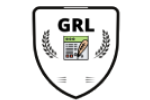Data visualization is a powerful tool that can be used to effectively communicate complex information and findings in academic journal publishing. The use of data visualization in academic journals is becoming increasingly popular as it allows researchers to present their data in a clear and concise manner that is easy to understand and interpret.
One of the key benefits of using data visualization in academic journal publishing is that it can help to make the research more accessible to a wider audience. For example, data visualization can be used to present complex data in a way that is easy to understand for those who may not have a background in the field of study. This can be particularly useful for researchers who are looking to reach a broad audience, such as policymakers and other stakeholders.
Another advantage of using data visualization in academic journal publishing is that it can help to increase the visibility of the research. By presenting data in a visually appealing and easy-to-understand format, researchers can attract more attention to their work and increase the chances that it will be read and cited by other scholars in the field.
There are a number of different data visualization tools that can be used in academic journal publishing, including tables, graphs, and charts. The type of data visualization tool that is best suited for a particular study will depend on the nature of the data and the research question being addressed.
One of the most popular data visualization tools for academic journal publishing is the line graph. Line graphs can be used to show trends over time and are particularly useful for comparing data from different sources. For example, a line graph can be used to compare the results of a study over time or to compare the results of different studies.
Another popular data visualization tool is the bar chart. Bar charts can be used to show the distribution of data and are particularly useful for comparing data from different groups. For example, a bar chart can be used to compare the results of a study across different age groups or gender groups.
At GRL Journals, we provide a variety of data visualization tools that can be used in academic journal publishing. Global Research Letter’s tools are user-friendly and easy to use, and they allow researchers to quickly and easily create high-quality data visualizations that can be used in their publications.
In conclusion, data visualization is a powerful tool that can be used to effectively communicate complex information and findings in academic journal publishing. By using data visualization, researchers can make their research more accessible to a wider audience and increase the visibility of their work. With the variety of data visualization tools available at GRL Journals, researchers can easily create high-quality data visualizations for their publications.
